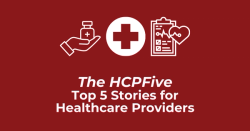
OR WAIT null SECS
ARCADIA LTE: Long-term Nemolizumab Effective in Adolescents with Atopic Dermatitis
This post-hoc analysis highlights nemolizumab’s long-term efficacy and safety in adolescents with moderate-to-severe atopic dermatitis.
Treatment of adolescents with atopic dermatitis using nemolizumab 30 mg every 4 weeks (Q4W) along with a background of topical corticosteroids (TCS) of low/medium potency with/without topical calcineurin inhibitors (TCI) improves key signs and symptoms, recent data suggest.1
These data were highlighted in a poster titled ‘Long-term efficacy and safety of nemolizumab in adolescents with moderate-to-severe atopic dermatitis: Post hoc analyses from ARCADIA LTE 1-year cut-off' (NCT03989206). This poster, presented during the 2025 Fall Clinical Dermatology Conference in Las Vegas, was authored by such investigators as Adam Reich, MD, PhD, a full-time professor at the Department of Dermatology, University of Rzeszów, Poland.
Nemolizumab is an antibody designed to block the interleukin (IL)-31 receptor α pathway in patients with inflammatory skin disease, and the drug has emerged in recent years as a targeted option for the management of the intense pruritus and inflammatory burdens connected with moderate-to-severe atopic dermatitis.
In previous phase 3 research highlighting nemolizumab's impact on adolescent patients, investigators identified meaningful benefits through the 16-week mark, some of which included skin lesion reductions, reductions in itch, and markedly improved sleep quality. However, Reich et al determined, given the chronic and relapsing nature of this skin disease, an extended follow-up assessment would be necessary to determine whether these gains persist and to further examine long-term safety signals.
In their present analysis, Reich and colleagues summarized the outcomes of nemolizumab use among adolescent participants on the medication for up to 56 weeks during the long-term extension program. A variety of adolescent groups were recruited for this ongoing, open-label, multicenter extension study:
- Subjects previously treated with nemolizumab in ARCADIA 1 or 2 or other development programs (nemolizumab-previously experienced, NPE);
- Patients without prior exposure to the drug (nemolizumab-naïve, NN);
- A cohort of 37 newly-recruited adolescents.
Those involved in Reich and coauthors' analysis were 12–17 years old and treated with nemolizumab 30 mg via subcutaneous injection on an every-4-week basis. Background therapy via low- or medium-potency topical corticosteroids was permitted, with optional use of topical calcineurin inhibitors as clinically appropriate.
Assessments by the investigators included the proportion of adolescent subjects attaining an Investigator’s Global Assessment (IGA) score of 0 or 1 (clear or almost clear). Additionally, Reich and colleagues looked at the percentage of these individuals attaining ≥75% or ≥90% improvement from the point of baseline on their Eczema Area and Severity Index scores (EASI-75 and EASI-90).
Patient-reported symptoms were tracked by the investigative team via the SCORAD visual analogue scales (VAS) for itch and loss of sleep. The team focused on ≥4-point improvement thresholds and the proportion of individuals attaining VAS scores <2. They also used the Dermatology Life Quality Index (DLQI) to assess any broader quality-of-life shifts among patients. All of the investigators' results were presented via observed cases without imputation.
At the 56-week interim cut-off point, Reich et al included 248 adolescent patients in the analysis (141 NPE and 107 NN). These participants had a mean age of 15 years. After 56 weeks of continuous nemolizumab treatment, the investigative team noted substantial clinical improvements documented in both cohorts. However, responses were generally shown to be higher among participants previously exposed to nemolizumab.
IGA scores of 0/1 were shown by the team to have been attained in 72% of participants in the NPE group and 53% of those in the NN group. Additionally, the investigators noted rates of EASI-75 were high in both cohorts, with 86% in NPE and 80% in NN, and EASI-90 responses were attained by 72% and 57%, respectively.
In terms of outcomes related to itch, similarly robust gains were observed. A ≥4-point drop in SCORAD VAS pruritus was reported among 79% of NPE and 59% of NN participants. Reich and coauthors also found achievement of VAS itch <2 was reached by 64% and 38% of these groups, respectively. Sleep loss improvements were found to have paralleled reductions in patients' levels of itch, with clinically meaningful responses in 85% of the NPE arm and 41% of the NN arm.
Reich and colleagues found improvements in patients' DLQI scores in more than 87% of the adolescents treated with nemolizumab over the treatment period, suggesting broad benefits on daily functioning as well as well-being. In their evaluation of the most common adverse events (≥5% incidence), the investigative team identified disease exacerbations, COVID-19 infections, and nasopharyngitis. They also identified most treatment-emergent events as mild to moderate, highlighting the minimal likelihood of serious events.
Overall, Reich and colleagues found nemolizumab 30 mg Q4W with TCS/TCI improved patients' key signs and symptoms of atopic dermatitis, including pruritus, skin lesions, and sleep disturbance, by the Week 56 follow-up.
For any additional information highlighting related topics in dermatology, view our latest coverage.
References
Reich A, Tauber M, Piketty C, et al. Long-term efficacy and safety of nemolizumab in adolescents with moderate-to-severe atopic dermatitis: Post hoc analyses from ARCADIA LTE 1-year cut-off. Poster presented at the 2025 Fall Clinical Dermatology Conference, Las Vegas, Nevada, Oct 23-26, 2025.
Augustin M, Tauber M, Piketty C, et al. Safety and efficacy of nemolizumab for atopic dermatitis up to 2 years in open-label extension study. J Eur Acad Dermatol Venereol. 2025 Oct 13. doi: 10.1111/jdv.70080. Epub ahead of print. PMID: 41081535.


